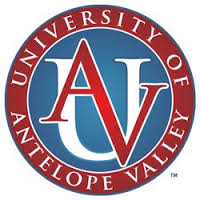What do they do?
Drive bus or motor coach, including regular route operations, charters, and private carriage. May assist passengers with baggage. May collect fares or tickets.
Also known as:
Bus Driver, Bus Operator, Charter Bus Driver, Charter Coach Driver, Charter Driver, Coach Operator, Motor Coach Driver, Motor Coach Operator, Motorcoach Driver, Motorcoach Operator, Transit Bus Driver, Transit Coach Operator, Transit Driver, Transit Operator
-
5.4%
Change
Select a state to see its job growth rate ranking21,200Job Openings
Select a state to see its net job growth ranking
Looking for colleges that offer a specific major? Use the College Match Tool to find your best-matched schools and discover your estimated Net Price!
- High school diploma equivalent (41%)
- Some college, no degree (28%)
- Associate's degree (11%)
- Less than high school diploma (9%)
- Bachelor's degree (9%)
- Master's degree (2%)
- Doctorate or Professional Degree (<1%)
People in this career often know a lot about:
- Transportation - Knowledge of principles and methods for moving people or goods by air, rail, sea, or road, including the relative costs and benefits.
- Customer and Personal Service - Knowledge of principles and processes for providing customer and personal services. This includes customer needs assessment, meeting quality standards for services, and evaluation of customer satisfaction.
- Public Safety and Security - Knowledge of relevant equipment, policies, procedures, and strategies to promote effective local, state, or national security operations for the protection of people, data, property, and institutions.
- English Language - Knowledge of the structure and content of the English language including the meaning and spelling of words, and rules of composition and grammar.
People in this career often have talent in:
- Far Vision - The ability to see details at a distance.
- Control Precision - The ability to quickly and repeatedly adjust the controls of a machine or a vehicle to exact positions.
- Multilimb Coordination - The ability to coordinate two or more limbs (for example, two arms, two legs, or one leg and one arm) while sitting, standing, or lying down. It does not involve performing the activities while the whole body is in motion.
- Depth Perception - The ability to judge which of several objects is closer or farther away from you, or to judge the distance between you and an object.
- Spatial Orientation - The ability to know your location in relation to the environment or to know where other objects are in relation to you.
- Response Orientation - The ability to choose quickly between two or more movements in response to two or more different signals (lights, sounds, pictures). It includes the speed with which the correct response is started with the hand, foot, or other body part.
- Reaction Time - The ability to quickly respond (with the hand, finger, or foot) to a signal (sound, light, picture) when it appears.
- Problem Sensitivity - The ability to tell when something is wrong or is likely to go wrong. It does not involve solving the problem, only recognizing that there is a problem.
- Rate Control - The ability to time your movements or the movement of a piece of equipment in anticipation of changes in the speed and/or direction of a moving object or scene.
- Near Vision - The ability to see details at close range (within a few feet of the observer).
- Selective Attention - The ability to concentrate on a task over a period of time without being distracted.
People in this career often do these activities:
- Follow safety procedures for vehicle operation.
- Drive passenger vehicles.
- Inspect motor vehicles.
- Measure the level or depth of water or other liquids.
- Provide customers with general information or assistance.
- Provide transportation information to passengers or customers.
- Assist passengers during vehicle boarding.
- Collect fares or payment from customers.
- Assist others during emergencies.
- Notify others of emergencies, problems, or hazards.
- Read maps to determine routes.
- Assist customers to ensure comfort or safety.
- Record operational or production data.
- Record sales or transactions data.
- Clean vehicles or vehicle components.
- Load shipments, belongings, or materials.
This page includes data from:

 Occupation statistics: USDOL U.S. Bureau of Labor Statistics Occupational Employment Statistics
Occupation statistics: USDOL U.S. Bureau of Labor Statistics Occupational Employment Statistics




















